#bushido
Text
Sigh
For the last fucking time, THE JEDI ARE NOT CATHOLIC!
They're not based off of the catholic church, that's just people's fanon interpretation (and it's mostly just people projecting their issues with catholicism onto the Jedi), if you actually take a minute to look up what George Lucas' sources and inspirations for the Jedi, you'll find that he based them off of everything EXCEPT christianity, the inspirations for the Jedi being Japanese and East Asian cultures, Arabic ideas (Jedi may be derived from "Al-Jeddi" which means "Master of the Mystic-Warrior way"), Buddhism, Jewish Mysticism, Samurai Bushido, Shaolin Monks, Hinduism, Qigong, Greco-Roman philosophy and mythology, Sufism, Confucianism, Shinto, and Taoism, the only christianity you might be able to say influenced the Jedi is Methodism, since Lucas was a Buddhist-Methodist
Like yes, you can certainly find Jedi beliefs and practices to be similar or parallel to catholicism and Christianity, I have, but that's on you, that's YOUR interpretation
#i say this as a catholic#wooloo-writes#wooloo writes#star wars#sw#pro jedi#in defense of the jedi#catholicism#jedi#christainity is like the only thing that DIDN’T inspire lucas when he was creating the Jedi#samurai#bushido#shinto#taoism#qigong#shaolin#sufism#greek philosophy#greek mythology#confucianism#jewish mysticism#arabic#jedi and judaism#look i get it#you were traumatized by the catholic church#that sucks#BUT STOP TREATING EVERY RELIGION LIKE THEY'RE CHRISTIANITY
280 notes
·
View notes
Text

happy new years 🎈
#digital art#iidiotart#procreate#illustration#lgbtq#bandoriart#bandori art#bangdream#bang dream girls band party#bang dream#bandori#bushido#lisa imai#roselia#バンドリ#今井リサ#sketch#doodle#rkgk
114 notes
·
View notes
Text

No one should ever try to control or manipulate others. We can’t control how others act toward us. But we can control ourselves, our emotions, our actions, who we allow in our lives and how we react to situations. We are in control of what we will tolerate and how we allow others to treat us. It’s called boundaries. And don’t let anyone call you controlling because you enforce them to protect yourself.
#poets on tumblr#onurtaskiran poetry#romantic writer#poets and writers#gentleman poet#control#controlling#poetrybyonur#writers#writers on tumblr#spilled ink#self discipline#boundaries#self respect#bushido#integrity#honour#self assurance
54 notes
·
View notes
Text
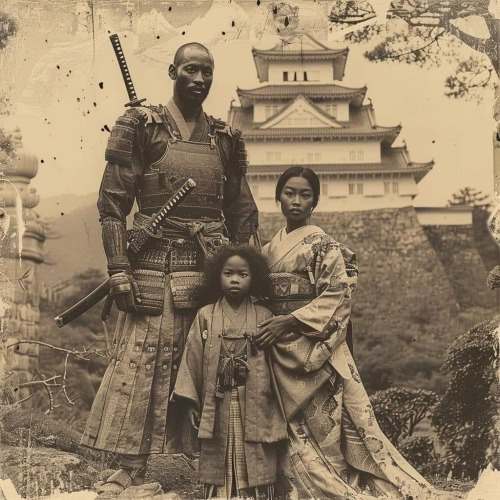
Is this Yasuke? Regardless , I love this !
#oyabuncongress#melanin#beauty#classy women#black beauty#black girl magic#pretty black woman#japan#oyabun#samurai#yasuke#bushido#shogun#afro samurai
98 notes
·
View notes
Text
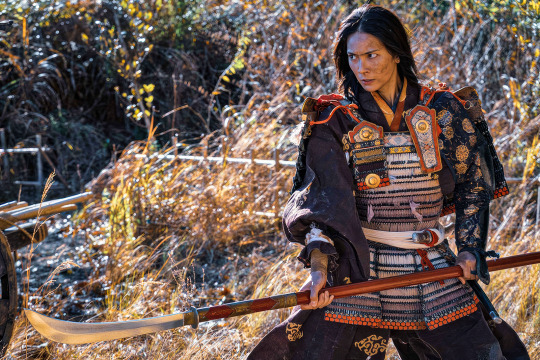
Akimoto Sayaka as Tomoe Gozen from TV drama "Kamakura Dono no 13 Nin" by NHK, Japan. Also Known As: The 13 Lords of the Shogun and 13 People From Kamakura
#samurai girl#akimoto sayaka#tomoe gozen#bushido#samurai woman#warrior#japanese#japanese woman#japanese girl
71 notes
·
View notes
Text

213 notes
·
View notes
Text
Criticism of Blue Eyed Samurai
Well, I just watched Blue Eyed Samurai. Been spotting several positive clickbait thumbnails of it, so even though I didn't have high expectations based on the trailer, I gave it a go. And well, it was what I feared it was. I still enjoyed it though! And it's an engaging story, just not what I wish it was. Anyways, I wrote a comment on Reddit about it, which I thought I'd repost here.
Edit: I ended up going in and reordering some paragraphs under headings, as people on Reddit replied to by comment. Noticing people are nitpicking the historical accuracy of my commentary, which wasn't really what I was concerned about. It's more that certain cues in these stories make me expect certain things.
The main point of much of this text is to look into what makes Blue Eyed Samurai a noticeably American story, by comparing it to other jidaigeki stories with a similar setting made for and by Asian people, and stories set in Asia made by Americans (for Americans).
🚧 NB! I'm still working on the text. Text marked in cursive are just notes, so please ignore them for now! 🚧
Overall verdict
I did also think of Ghost of Tsushima while watching, but in the sense that Blue Eyed Samurai lacks what I liked about it. Ghost of Tsushima did a great job with its Japanese localization, and referenced actual bushido conduct, although a little bit off still. Blue Eyed Samurai throws around words like samurai and honor, but doesn't appear to actually understand what these words entails, and only focuses on the superficial badassery of it (...)
But overall, great choreography and compositing, engaging story and characters ... Blue Eyed Samurai is good, but does veer into the uncanny valley for me, which I know was an issue Asians had with ATLA. Guess I felt it a little bit more with Blue Eyed Samurai due how much (unrealistic) violence and (meaningless) sex is glorified, and made me question what exactly the overall moral message of the story was supposed to be beyond simply "revenge plots are cool but also destructive." As somebody else said, it's giving "guts and tits for the people."
Glorification of the badassery of revenge
So, somebody replied that they thought we should be careful about romanticizing bushido, and provided examples of samurai being deceitful. This is my reply.
You missed my point. I did not want Blue Eyed Samurai to romanticize bushido, I wanted it to discuss and explore it, exactly because it throws around words like honor and samurai. A first step towards this is to acknowledge that Mizu is not a samurai.
What is Mizu?
We could argue that she is a ronin, but then she'd technically must've been serving a lord as a samurai in the past, and should be at least be a tiny bit concerned with chivalry (at least enough to discuss or talk about it), which we know isn't the case. Mizu is closer to being a shinobi/ninja, since her goal is to assassinate her 4 maybe fathers. Another thing Mizu shares with shinobi is that both are often criticised by samurai because of their penchant for ambushes and lack of concern for bushido / warriors code. Yet she breaks the mold of being a shinobi, since she doesn't really sneak around in (civilian) disguise and will openly brawl her way through a dojo and into a fort.
Mizu has a lot in common with the titular protagonis of the manga Azumi. Both are female assassins with foreign blood (bluish eyes) fighting during the Sakoku policy. While Mizu's motivation is simply revenge for the injustice she and her mother suffered at the hands of the gaijin faction, in Azumi the motivation is to prune the country like a bonsai tree off individuals which may threathen a new age of peace, and prevent the country from slipping back into the Sengoku period of civil war.
But where characters in Blue Eyed Samurai is heavily protected by plot armor, allowing Mizu to be an almost invincible pin cushion, no one is safe in Azumi and injured characters requires months to recover and heal from cuts.

While writing this, I recalled that in episode 5, they interjected a story about a samurai marrying and fathering a child with a woman who descended from an enemy clan. He kills both her and their son, which turns her into a onryō. Mizu being an Onryō works, but I am left questioning how this fits into the story beyond its symbolism, as there's been no explicit supernatural elements in the story. Mizu is bullied for being the (devil) spawn of a quote "white devil" in childhood, I think it would be more interesting if they called her a "white ghost," since onryos (which could represent Mizu) are a type of vengeful female ghost. Furthermore, Taigen often compares Mizu to a dog, esp. when she does not live up to the samurai standards he holds her to. Not sure where that fits in either..
Orientalism
So the statement about samurai criticising shinobi was called out as orientalist. This was my reply:
As for orientalism, I guess Blue Eye Samurai is being orientalist then, which I was kinda feeling while watching but didn't really put into words. It's pretty stereotypical to connect Japanese with honor and samurai after all, contributing to why I felt the show was very American.
In the sense of samurai simply meaning warrior, then we can consider Mizu a samurai. But Taigen (and Akemi) connects being a samurai with honor and complains about fair play. By making this connection, he invokes bushido/chivalry and excludes people who ambush others like assassins from the definition of being a samurai, and by extension criticises assassins like ninjas for not shying away from "dishonorable" ambushes. To restore his honor, Taigen wants to arrange a formal duel and even writes up a challenge letter (hatashijou), which makes sense in terms of the dojo trope. But well, the series does contradict itself a lot in favor of cool one liners, and what it means to be a samurai or knight has changed throughout history.
"Glory" in Azumi
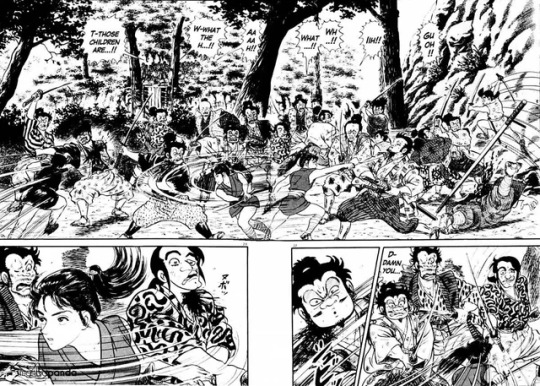
As I said, the manga Azumi is what I was hoping Blue Eyed Samurai would be. Azumi is a gritty look into (among other things) both shinobi and samurai that does not romanticize either, and has won an award for its exploration of these concepts in relation to buddhism. In fact, everyone in Azumi suffers. The only one who is perhaps glorified is Azumi, who many critics compare to a boddhisattva.
Throughout the story, Azumi works to not become too attached to earthly comforts, but still suffers because of her attachment to her companions. As Azumi completes her pruning missions for her boss (the Buddhist monk Tenkai), she accumulates a lot of bad karma in the form of endless waves of people pursuing her for either revenge, the bounty on her head, the thrill of defeating a master swordswoman, etc. Because of it, 90% of her closest companions SPOILER die, and many of her friends are raped or permanently maimed, and has to deal with the trauma and practical inconveniences of it. Often because they are caught in the crossfire between Azumi's targets or those who pursue her.
By the end of the story, Azumi still ends up making new companions like usual and her boss continues wanting to send her on pruning missions. But she decides to leave them all behind, so that those she cares about will not be affected by her bad karma again. She knows she will have to stay on the road indefinitely and will never really be able to enjoy the comforts of settling down, because of her pursuers. The series makes the buddhist argument that earthly attachment in general causes suffering, and Azumi is enlightened by abandoning those attachments and by facing her karma, although that does not mean she will not end up with a violent death. The story ends openly with Azumi wandering off into obscurity.
Time period
Some people began nitpicking the historical accuracy of my commentary, which wasn't really what I was concerned about. I am open to artistic liberty. However, with BES it was a little bit harder, since they made so many historical references and leaned into the jidaigeki genre, but then broke it in ways that came off as uncanny to me. Looking back, I guess this uncanny feeling was the orientalism letting itself be known, though I couldn't put it into words back then.
As jidaigeki is a subgenre of historical stories, certain cues does make me expect certain things. Like when I see an English-speaking gaijin as the antagonist, I would make the connection that this story is probably set sometime after the Americans forced Japan to open up for trade in the 1800s. Yet this expectation is then contradicted when I learn that no foreigners are allowed in Japan yet due to the Sakoku policy, which makes me wonder what this Irishman is doing here all alone centuries too early and how he even managed to climb to such a powerful position while being so isolated.
Gaijins as antagonists
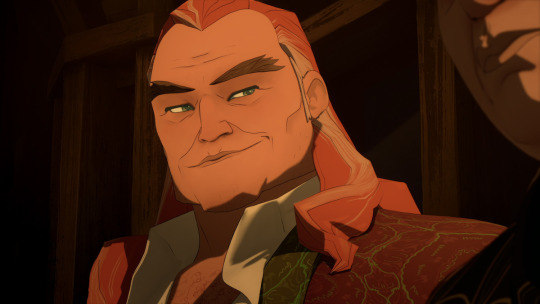
Why an Irishman as the gaijin antagonist? It'd make more sense if it was a portuguese or dutch. If Blue Eyed Samurai is set in 17th century Edo Japan, it's a long time off when the Americans forced Japan to put down the sakoku policy, and even then, why Britain/London? If anything, Japan and Britain liked each other enough to form an alliance for their shared fear of Russia.
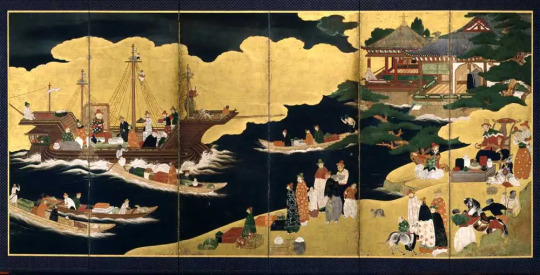

Why not other colonial powers who were actually active in Japan and Asia overall at the time (the Dutch) or the ones who caused Christianity to be banned during the sakoku (the Portuguese).
My first thought of a precedent goes to Konishi Shizune, the Christian revolutionary leader in Azumi who's also mixed race like Azumi, which is based on the historical Amakusa Shiro.

(Depictions of Gaijins: Americans during postwar Japan in Hajime no Ippo. Senator Armstrong in Metal Gear Solid)
Japanese in Europe
With Mizu heading to Europe, I came across people discussing the plot armor and how Mizu wouldn't stand a chance against the guns nor London police. It came off as kind of white supremacist, and the entire thread was locked because of unsolicited opinions from outsiders.
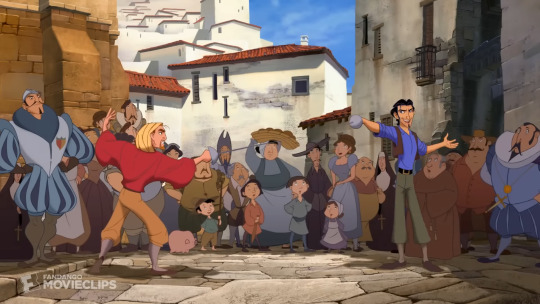
To be fair, Japan had guns too at the time. According to Netflix themselves, Blue Eye Samurai takes place in the 1600s. If that's the case, it means that the guns were mostly muskets, rifles and pistols which took time to load, so people did still use swords even in Europe. And only a century earlier in the 1500s, when Dreamwork's El Dorado is set, people would still use firearms and crossbows side by side, and Oda Nobunaga also used firearms in his own warfare during the sengoku period.
Also, the police didn't exist yet, since the UK police were created in the late 1700s. As for the London battalion or royal guards storming her, it'd either amount to when she was stormed by the hand claw guys. The plot armor in the first season was a lot imo even then though. But sneaking up on them depends on the terrain and context, so I can see it happening.

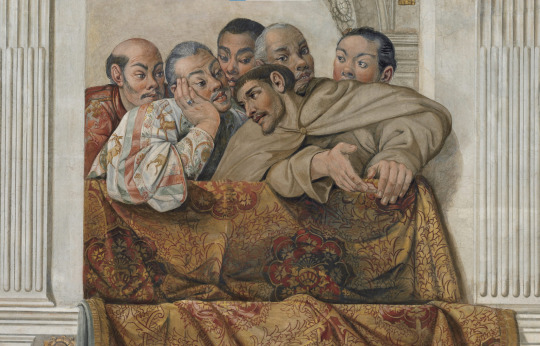
Furthermore, it's not unrealistic for Japanese people to travel to Europe, because there's historical precedence for this. In 1613, Hasekura Tsunenaga was sent on a diplomatic mission to negotiate with the pope and the king of Spain, and some of his men even stayed behind to form the Japon clan in Spain. The expedition took 7 years, and ironically enough, once he returned, christianity had already been banned in Japan. The people who still kept the Christian faith in spite of this came to be known as kakure kirishitan.
Debauchery means it's for adults ..
The way characters (esp. Mizu) will throw out badass oneliners as if on a treadmill, only to contradict exactly what she said as short as 5 seconds later does mess with my suspension of disbelief.
The story also goes into protitution and patriarchy, though it also felt superficial to me. If anything it feels like an excuse for fan service, similar to Game of Thrones in a sense. Like they know that sex sells, and that's what "the audience really wants." That said, again I enjoyed both GOT and Blue Eye Samurai, even though some may laconically break the former down to "dragons and tits" and the latter to "guts and tits".
Token representation
Mizu's apprentice was born without hands, which could have brought about an interesting exploration of disability. But instead, he's relegated to being a quirky sidekick and comedic relief..
BES is an American story
Blue Eyed Samurai has all the visual motifs of a Japanese samurai story (jidaigeki), but the tropes and logic is extremely American. It does get the artifacts and set dressing of a jidaigeki story right (surprisingly accurate at some points), which is why it triggered the uncanny valley for me sometimes. When certain artifacts and set ups appeared, I expected it to follow certain tropes I'm used to from jidaigeki, but it didn't really do that.
Kung Fu Panda
In contrast, Kung Fu Panda is also in the same boat. It has the artefacts of a Chinese wuxia story, but it is ultimately based on Chinatown (a theme park-esque idea of China designed by and to cater to white people, as a Chinese American defense mechanism). However, where Kung Fu Panda is an American love letter to Chinese kung fu films, Blue Eye Samurai isn't really a love letter to jidaigeki, and caters rather to white people's idea of the stereotypical samurai.
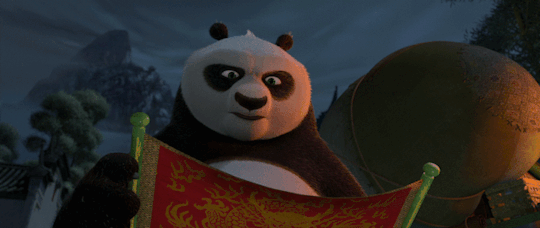
My understanding is that Kung Fu Panda is pretty popular in China.
Yes, Kung Fu Panda is popular in China. I also enjoyed Kung Fu Panda, which is why I used it to compare what I felt was lacking in Blue Eyed Samurai. If I had to choose one to rewatch, I would rather watch Kung Fu Panda.
That said, Accented Cinema points out that although Kung Fu Panda is often used as an argument of successful orientalism, it's rather about China's own failure in representing themselves. In my opinion, Kung Fu Panda's perhaps saving grace was that it didn't take itself too seriously, yet still delivered on the serious bits when it needed to.
Patriarchy and gender roles
While I understand and appreciate your critique, I don't think the narrative is grounded in realism. It's more like expressing the need that women do have to see themselves in the shoes of a physically invincible protagonist. Also the motivation isn't simply revenge - what has happened to Mizu has convinced that her very existence is suffering. She's internalized the hate to an extent that it no longer matters whether she lives or dies. She will slowly change as a person and her motivations will also change, which I hope we get to see . All the characters are somewhere trying to rebel against their gender roles, and that I feel is the 'message'. Also as far as the right antagonist to show goes, Fowler seems an indictment of British colonialism a few centuries too soon, but his attitudes aren't unfamiliar. At all.
Blue Eyed Samurai doesn't explore the concepts it references or markets itself with, but seems to throw them around because samurai and honor sounds cool and is a stereotypically Japanese/Sinosphere thing. Instead it'd rather explore gender roles and patriarchy. And the character Blue Eyed Samurai primarily uses to explore these themes with isn't the titular protagonist, but rather Princess Akemi.
But Akemi's struggles with patriarchy, also comes off as more a Western suffragette story than a Sinosphere one.
The Princess as a Caged Bird
Other stories about gender roles and patriarchy in ancient Japan to which we can compare this to is probably Isao Takahata's Princess Kaguya, though this one is probably set long before BES in the Heian period.
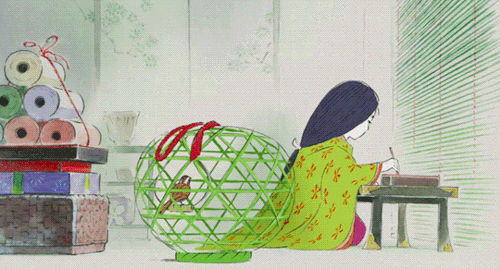
Like in Kaguya, the ohaguro set is presented as a symbol of oppression for Akemi. However, instead of being explicitly oppressed by outside forces like Akemi, Kaguya is instead pressured by societies and her father's idea of what a princess should be to become happy. Throughout the film, Kaguya questions what it is all for and even counters against her governess that "a princess is not a human then!"

Princess Kaguya as a roadside flower. To be plucked in a moment of fancy, and neglected once savored and bored. Merely a trophy to be won and stowed away in a display cabinet.
The film explores what makes life worth living, by exploring the difference between humanity and moon people.
Filial piety. Fulfilling your own dreams through your offspring. Showing off achievements to relatives (accumulating merit).
Geisha and maiko in contrast to the Oiran of the red light district. Streetwalkers. Prostitution - the world's oldest profession.
Oda Nobunaga's younger sister in Nobunaga Concerto and Azumi.
Hypergamy. Tradition of men being adopted into the wife's household. The Fujiwara clan of the Heian period, who continuously married their women into the imperial family for generations. Attitudes around cheating and monogamy (Genji Monogatari).
The Fallacy of the Stereotypical Asian woman


Oshin - Resilience and endurance.

Asian women as firecrackers. There's a reason why the stereotype of Tiger Mom even came to be, because Asian women and people in general are not weak and strictly submissive, although they are often mistaken as doormats.
Honne and tatemae
Yamato Nadeshiko
While writing about this, I ended up going on a tangent about Asian women, which you can read here: The Fallacy of the Stereotypical Asian Woman.
Gender roles in Genderbender
Kaze Hikaru
Ryou
Torikaebaya Monogatari, where a brother and sister in the Heian period is gender mixed at birth, to fulfil gender roles they're more "suited" for according to societal expectations. Another Heian period text about a guy who crossdresses as a woman to get close to a woman he has a crush on.
Gender fluidity has been the norm throughout most of history.
A wolf in sheep's clothing
I guess the show is more concerned about gender roles and patriarchy. I'm actually not all that concerned with historical accuracy, but I couldn't help but be thrown off by how it felt like vastly different time periods (and thus different expectations in terms of jidaigeki tropes) were meshed together. I still stand by that the show is a very (overseas Asian/) (Asian) American narrative, which made it uncanny how accurate it still was in terms of getting the artefacts etc. of a jidaigeki right. Sort of like a "wolf in sheeps clothing," though that doesn't make it a bad thing. For example, Akemi feels more like a Western suffragette, rather than an Asian feminist. Yet the ohaguro set etc. may be a reference to Isao Takahata's Princess Kaguya, which is about feminism.
The story came off as stereotypical to me. Yet it does get the artifacts and set dressing of a jidaigeki story right (surprisingly accurate at some points). I did cringe at some points or feel the uncanny valley, but again overall the show was engaging and enjoyable.
I've enjoyed other orientalist stories before, such as Kung Fu Panda and Avatar the Last Airbender. I've also enjoyed occidentalist stories like mohuan and isekai. Yet something with Blue Eye Samurai made me cringe sometimes. Comparing it to the others I've mentioned, perhaps it's because it's set in a more non-fantastical setting as opposed to a jianghu of sorts idk. Blue Eye Samurai is still entertaining though, and may be the start of a new genre.
It's hard to explain what it feels like for people who don't have the same cultural references, so here's an example of occidentalism. I noticed that when Genshin Impact (a Chinese game) released the new Fontaine region where they decided to mix Britain, Italy, France etc., which people claimed is just plain weird haha. But Fontaine has still been well received regardless it seems. On the other hand, I still cringe every time I see Senator Armstrong in Metal Gear Solid.
Historical references
Random, but here's a list of different artifacts and set dressings that appeared in the show. The little theatre play about the ronin and his wife uses kurogo (black clad actors) to manipulate the dolls, which was novel to see. Previously I've mostly watched kurogo being used to manipulate perspective such as in this Matrix Ping Pong skit and the Tokyo 2020 pictogram opening ceremony. Traditionally, Kurogo is used in Kabuki to create special effects and are supposed to be invisible to the audience.

Mizu's husband uses a naginata, which is basically a spear. Although also used by warriors in general, it was often used by women.

#Blue Eyed Samurai#Netflix#review#criticism#Azumi#Kung Fu Panda#Ghost of Tsushima#Avatar the Last Airbender#samurai#bushido#shinobi#ninja#onryo#gaijin#Sakoku#karma#revenge#uncanny valley#kurogo#feminism#orientalism#occidentalism#decolonization#blog
84 notes
·
View notes
Photo

兵法は全ての事象に通じる
- Musashi Miyamoto
The way of the warrior is the way of the universe.
#miyamoto#miyamoto musashi#quote#japanese#samurai#warrior#way of the warrior#swordmanship#bushido#japanese culture#japan#japanese artist#art#star wars#obi wan kenobi#darth vader#duel#culture
391 notes
·
View notes
Text

Nodachi time.
54 notes
·
View notes
Text

65 notes
·
View notes
Text
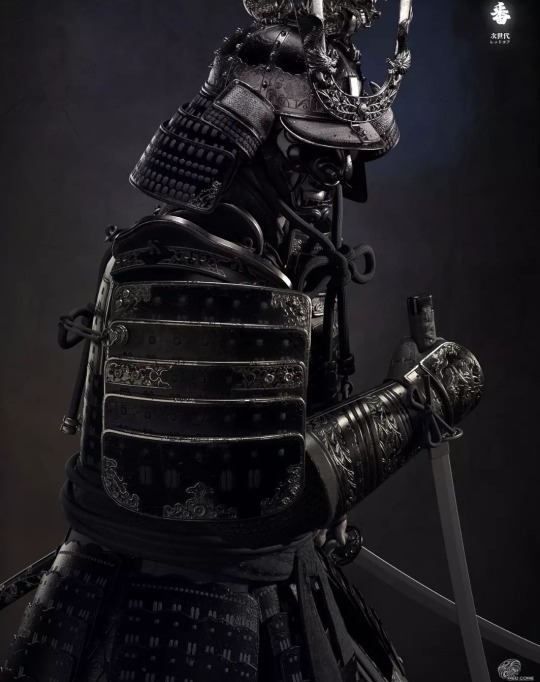
478 notes
·
View notes
Text
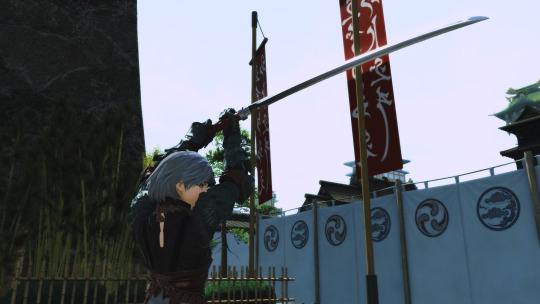
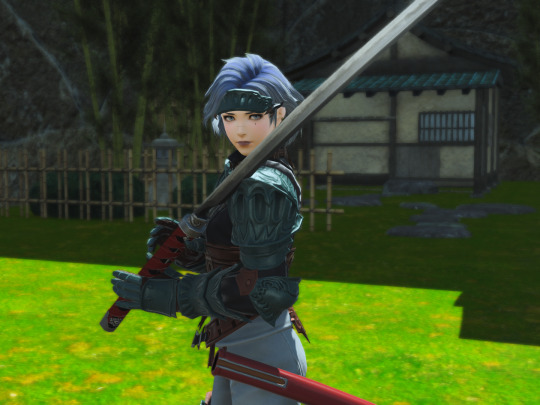


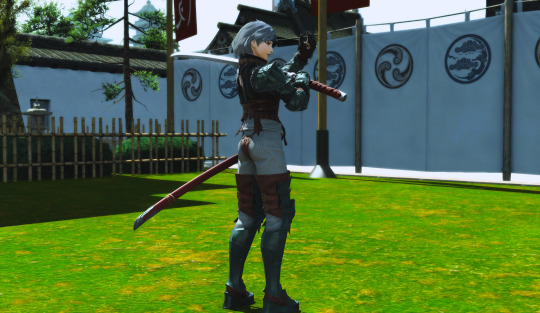

Marian ◦ "If I am to be used as a weapon, then I shall be the strongest."
#final fantasy xiv#ffxiv#my wol#marian varlineau#ffxiv gpose#ffxiv samurai#ffxiv oc#ffxiv kugane#bushido#female samurai#always training#wild and pure and forever free
22 notes
·
View notes
Text
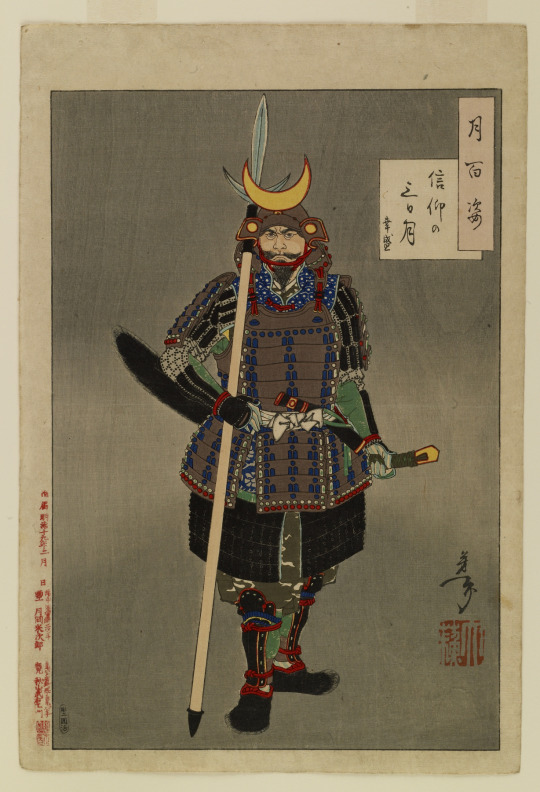
Yamanaka Yukimori (from the series One Hundred Aspects of the Moon), Yoshitoshi, 1886
#art#art history#Asian art#Japan#Japanese art#East Asia#East Asian art#ukiyo-e#woodblock print#Yoshitoshi#Tsukioka Yoshitoshi#samurai#bushido#Yamanaka Yukimori#Sengoku#Meiji Period#Meiji Era#Meiji Restoration#19th century art#Walters Art Museum
180 notes
·
View notes
Text
義 (gi) "integrity" - the first virtue of 武士道 (bushidō)
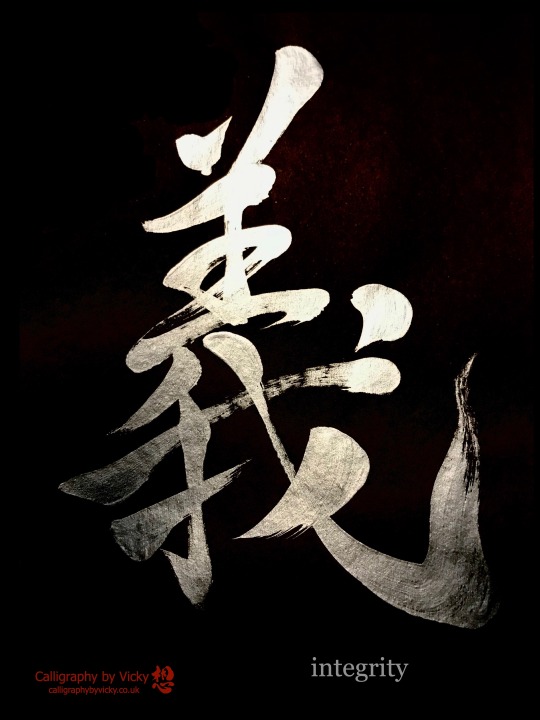
Recently I've been researching 武士道 (bushidō) - the ancient Japanese way of the warrior, mostly to try to figure out if it ever was actually a legit thing, or if it's a modern invention.
Spoiler alert: it's a bit of both. You can read my conclusions in my Wordpress article here.
Bushidō comes with a handy list of 8 virtues that one can follow to lead one's best and most noble life. You may not have been born a samurai, but you can still live like one by following this code.
The first virtue is "“Rectitude or Justice”, which I have "translated" as "integrity", for reasons below:
Historically in Japan, opinion on what was “right” or “moral” was fairly uniform.
In modern Western countries, people of many different cultures and backgrounds live side by side, so it is neither possible nor desirable for individuals to always look to their societal norms for moral guidance.
These days what is considered “right” is often something that one must decide for oneself.
However, the ideal of sticking to one’s values even when it is difficult is still considered a virtue: that of having personal integrity.
#書道#japanese language#japanese calligraphy#japanese art#japanese culture#japanese langblr#calligraphy#japan#japanese#kanji#Asian art#bushido#samurai#Japanese history#japanese history
94 notes
·
View notes
Text






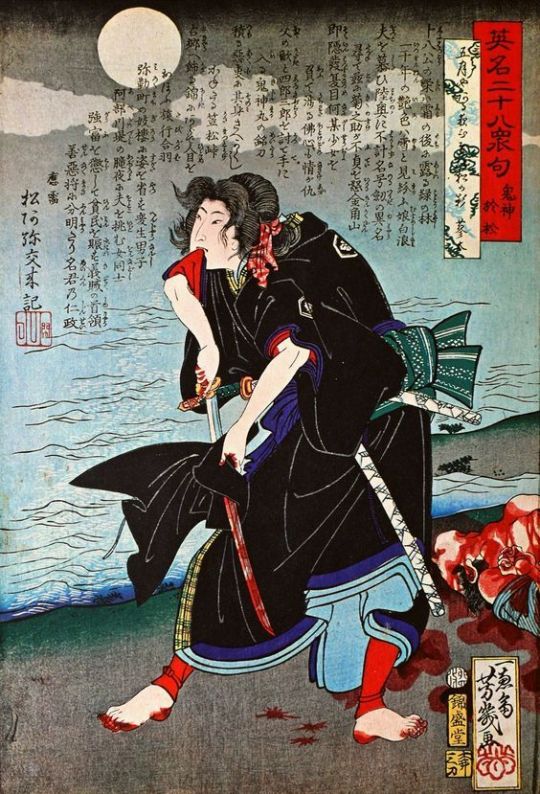

Arte Japonesa
149 notes
·
View notes
